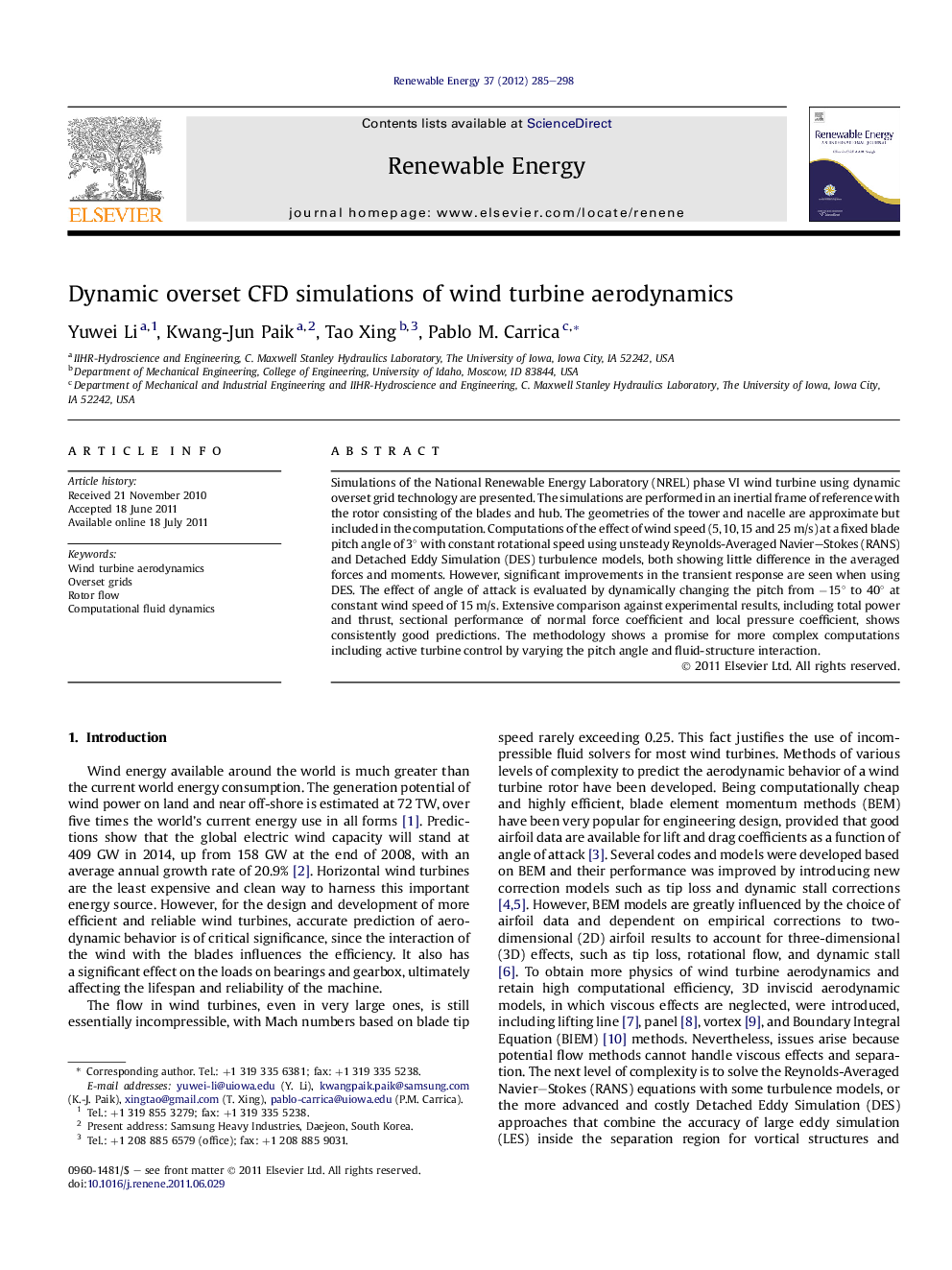| Article ID | Journal | Published Year | Pages | File Type |
|---|---|---|---|---|
| 301400 | Renewable Energy | 2012 | 14 Pages |
Simulations of the National Renewable Energy Laboratory (NREL) phase VI wind turbine using dynamic overset grid technology are presented. The simulations are performed in an inertial frame of reference with the rotor consisting of the blades and hub. The geometries of the tower and nacelle are approximate but included in the computation. Computations of the effect of wind speed (5, 10, 15 and 25 m/s) at a fixed blade pitch angle of 3° with constant rotational speed using unsteady Reynolds-Averaged Navier–Stokes (RANS) and Detached Eddy Simulation (DES) turbulence models, both showing little difference in the averaged forces and moments. However, significant improvements in the transient response are seen when using DES. The effect of angle of attack is evaluated by dynamically changing the pitch from −15° to 40° at constant wind speed of 15 m/s. Extensive comparison against experimental results, including total power and thrust, sectional performance of normal force coefficient and local pressure coefficient, shows consistently good predictions. The methodology shows a promise for more complex computations including active turbine control by varying the pitch angle and fluid-structure interaction.
► We present dynamic overset RANS and DES simulations for NREL phase VI wind turbine. ► The predictions match the experimental data consistently well. ► DES predicts fluctuations with frequencies similar to the experimental measurements. ► At the level of grid resolution, the frequency amplitude is under-predicted.
